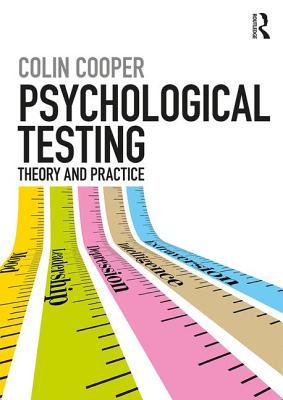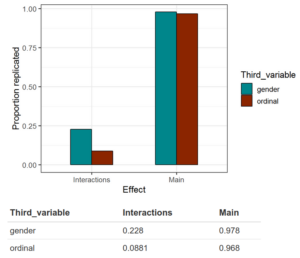
- Cooper, C. (2018). Psychological testing: theory and practice. Routledge.
This is a pretty food good introduction to psychometrics (the science of psychological measurement). There is the now customary dislike for NHST, more focus on effect sizes, mostly equation-free presentation (except when needed). The table of contents gives a good idea of the conceptual space covered:
- Introduction to Psychometrics
- Tests, Scales and Testing
- Scoring Tests and Scales
- Interpreting Scores
- Correlations
- Random and Systematic Errors of Measurement.
- Validity
- Introduction to Factor Analysis
- Performing and Interpreting Factor Analyses
- Alternative Factor Analysis Designs
- Developments in Factor Analysis
- Item Response Theory
- Constructing a Scale
- Problems with Test Scores
- Psychometrics in Context
Most importantly, it is relatively brief, at ~350 pages, and full of examples. The author provides a ton of spreadsheets with interactive abilities, akin to my own R Shiny collection (Understanding Statistics series).
One consistently annoying thing is that the author makes a big deal out of Joel Michell‘s fringe criticism of psychometrics. The author of this book doesn’t just properly explain the levels of measurement, and clarifies that it seems not yet possible to generally measure things in psychology on a proper ratio scale. That is, psychometrics is generally about measurement at interval level, and quasi-interval level. I think we should in general ascribe this to the author being a curmudgeon about methods in general. Some people cannot be satisfied.
On the positive side, the textbook is fair about intelligence testing. In fact, the author wrote a brief textbook on intelligence 5 years ago: Intelligence and Human Abilities: Structure, Origins and Applications (2015). I only learned of this book recently, but haven’t read it because I couldn’t find a pirate version.
The treatment of test bias in measurement is not very good. It comes down to simply detecting it, and then discarding items with bias. The author apparently forgot about his anti-NHST stance when writing this part. He should have covered effect size approaches in test bias (IRT), in particular this paper by Meade 2010. One can do similar things for test-level analysis (MGCFA/LSEM).
